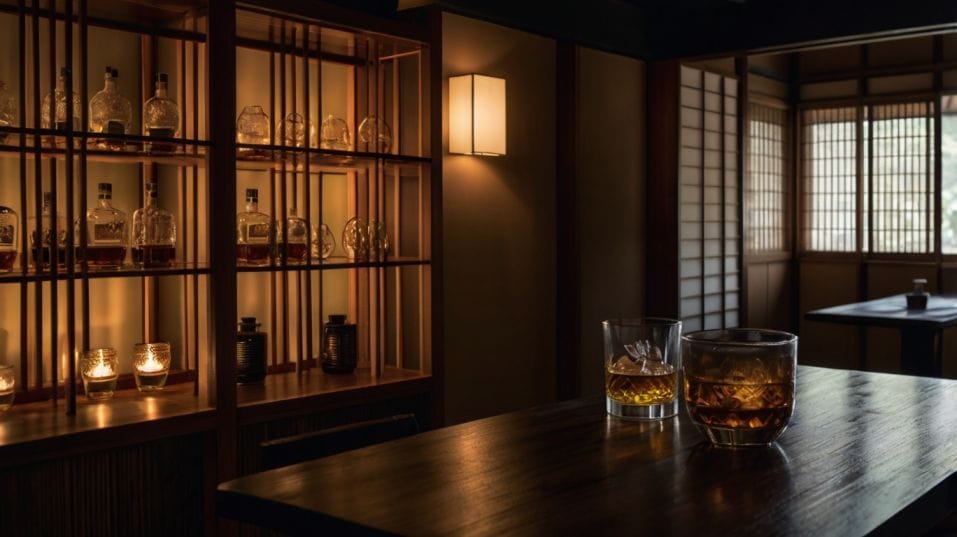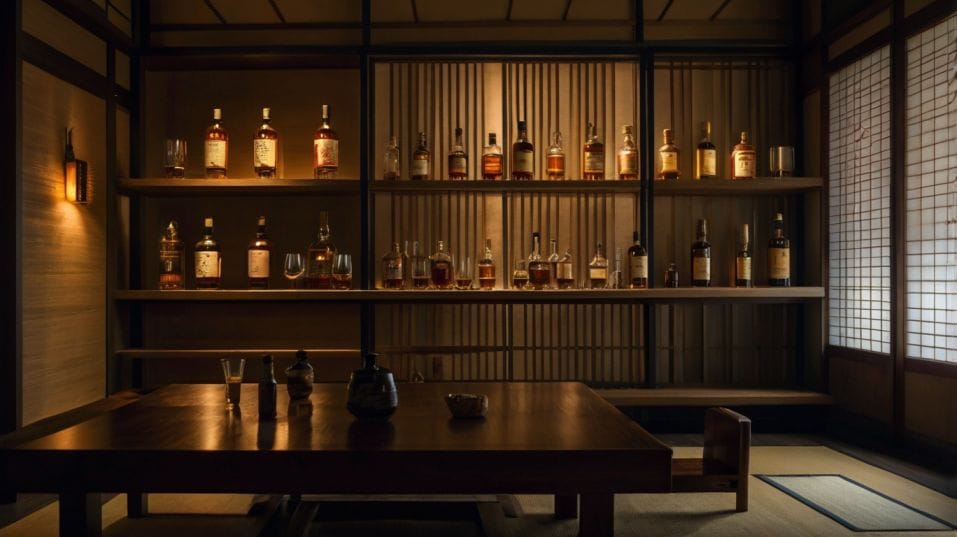Is Japanese Whiskey Still Worth Collecting?
Is Japanese whiskey still worth collecting? Discover how to spot quality, avoid hype, and build a whiskey collection with purpose and precision.

Ever wondered if Japanese whiskey is still worth the hype—or the hunt? Prices are up, shelves are bare, and hype is everywhere. But beyond the noise lies something rare: whiskey built on balance, craft, and deep attention to detail.
If you're just starting your whiskey journey, the right Japanese bottles can sharpen your palate and deepen your understanding. So is it still worth collecting? That depends entirely on how—and why—you collect.
The Original Appeal: Clarity Over Clout
Japanese whiskey didn’t rise by being loud. It earned respect through craft, discipline, and an almost obsessive devotion to blending and balance.
The early icons—Yamazaki 12, Hibiki 17, Nikka’s Yoichi single malts—offered a different kind of experience. Light yet structured.
Elegant but not empty. They brought a clarity of flavor that felt more composed than most Scotch or Bourbon of the time.
At its best, Japanese whiskey doesn’t try to impress—it invites you to pay attention. A fine-grained texture. A quiet flash of incense. A balance between sweetness and minerality that feels almost architectural.
That kind of whiskey teaches you how to taste better. It slows you down. It makes you care.
Then Came the Boom (and the Backlash)
The rise was fast—and messy. As global demand exploded, age-stated whiskeys disappeared from shelves. Distilleries couldn't keep up. New producers sprang up to meet demand, and not all of them were transparent.
Some blended foreign distillate into domestic bottlings. Others leaned on flashy packaging to move middling juice. Even the major players began releasing no-age-statement bottles with mixed results.

Prices shot up. Scarcity became a sales pitch. Collectors stockpiled bottles that were barely drinkable. The category got crowded, complicated, and inconsistent. If you're entering the scene now, it's easy to feel like you missed the golden era.
But here’s the reality: most of the market noise has nothing to do with actual quality. The best Japanese whiskey still delivers. You just have to know how to find it—and what to ignore.
Why You Collect Matters More Than What You Collect
If you're collecting to flip bottles or impress friends, Japanese whiskey might not be your best play right now. The top-tier bottles are locked behind auction walls.
The mid-tier space is flooded with overpriced releases. And the bottom-tier market is full of inconsistencies.
But if you’re collecting to drink—if you’re building a selection that deepens your understanding of whiskey—then Japanese bottles still have a lot to teach you.
Because flavor is still the focus. When done right, Japanese whiskey rewards close attention. You get complexity without aggression. Detail without clutter.
Whiskey that evolves over time, not just with age, but in the glass—minute by minute, sip by sip.
This is a category that forces you to slow down and taste with intent. That’s a collector’s skill you’ll use across every style, from peaty Islays to dusty old Bourbons.
And the more intentional your palate becomes, the sharper your collecting instincts get.
How to Collect Japanese Whiskey Smarter
Let’s be clear—most of what’s marketed as “collectible” today is hype with a high price tag. Real collecting starts with learning what you like and why.
Japanese whiskey is especially rewarding because of how it’s made. It leans into blending, not brute force. It values restraint, not just intensity.
It uses unique wood like Mizunara oak to create dry, spicy notes you won’t find in Scotch or Bourbon. And it often focuses more on balance than on proof or peat.
That means the best bottles aren’t always the most obvious ones. Some of the most educational pours are lower-proof blends or underrated grain whiskeys that help you track how texture and structure work across a lineup.
You don’t need a $500 bottle to start collecting well. What you need is a mindset: look for bottles that make you curious. Pour what helps you understand flavor better. Choose bottles you’ll revisit—not just display.
And yes, open them. Whiskey doesn’t exist to be hoarded. It exists to be experienced.
The Pitfalls to Watch For
There’s a lot of fog in the Japanese whiskey world right now. If you’re building a collection, keep your guard up against these common traps:
Unclear labeling
Not all whiskey sold as “Japanese” is fully distilled and aged in Japan. Some is imported, relabeled, or mixed with foreign distillate. That’s changing slowly due to new labeling laws, but be cautious.
Overpriced NAS (No Age Statement) bottles
Just because something is labeled “Limited” doesn’t mean it’s good. If it doesn’t taste right to you, it’s not worth your shelf space.
Collector echo chambers
Reddit, YouTube, and collector groups can be helpful—but they can also create false demand around average bottles. Trust your own palate first. That’s your edge.
Overvaluing rarity
Just because something is hard to find doesn’t mean it’s worth finding. Focus on whiskeys that teach you something when you drink them.
How Japanese Whiskey Makes You a Better Collector
You learn more collecting one great Japanese blend than from chasing five generic bourbons. Why? Because it forces you to focus on subtlety.
You start recognizing how blending creates shape and flow. You notice texture. You begin to care how oak interacts with spirit over time.
That kind of sensory precision makes you a better taster—and a smarter buyer. It sharpens your ability to filter hype from substance.
It gives you a foundation you can apply to Scotch, American whiskey, world whiskey, even rum or Cognac. If you're serious about flavor, Japanese whiskey builds fluency fast.
Final Thoughts
So, is Japanese whiskey still worth collecting? Yes—but only if you're doing it for the right reasons.
The flashy bottles might be overhyped, and the market may be noisy, but the core values of Japanese whiskey—precision, balance, restraint—are more valuable than ever.
Start where the flavor is. Learn to taste with intent. Use Japanese whiskey as a lens, not a finish line. Collect bottles that deepen your experience, not just your shelf.
If you’re serious about building a collection that actually means something, start today. Try a new blend. Revisit a bottle you didn’t understand the first time. Train your palate, not just your wallet.
Your best whiskey doesn’t have to be rare. It just has to be yours—chosen with purpose, enjoyed with attention, and built into a collection that tells your story, one pour at a time.




